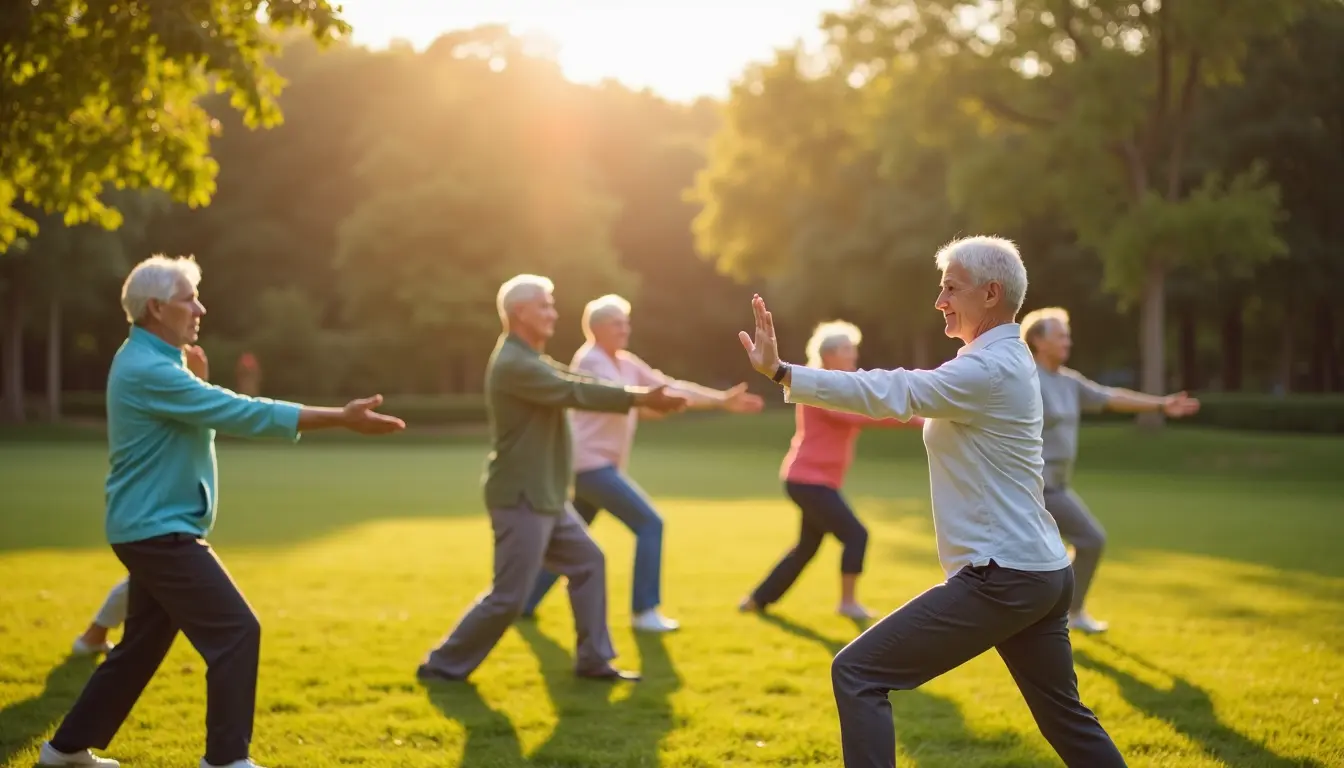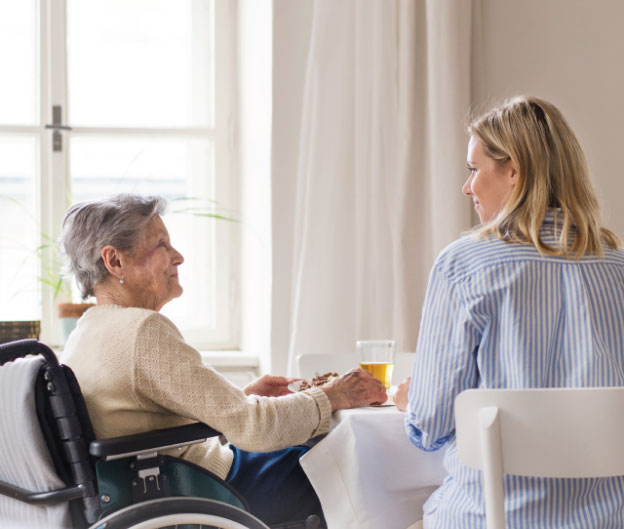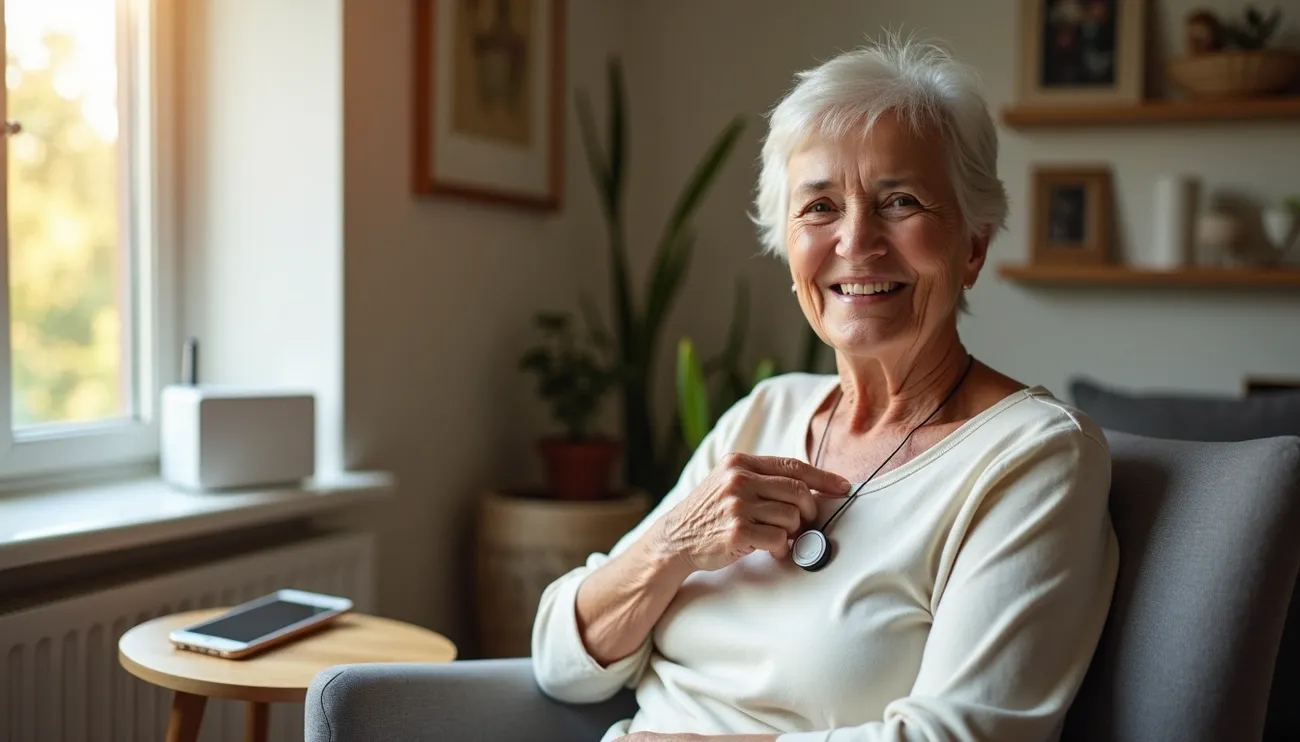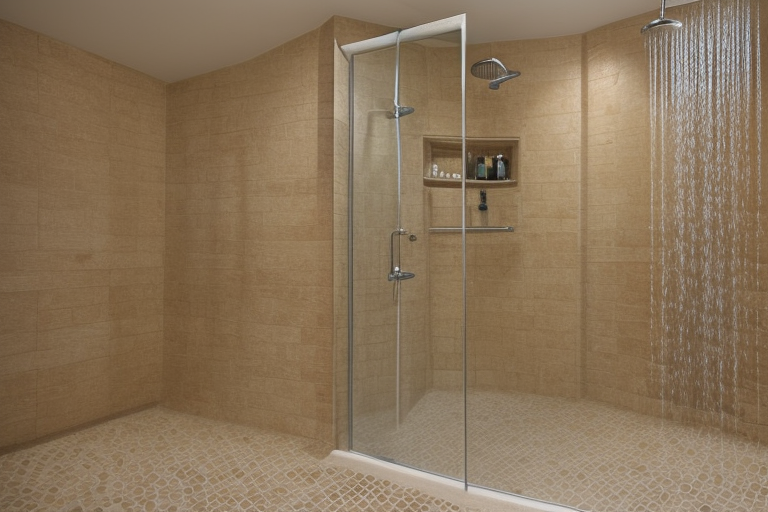Effective Exercises to Prevent Falls in Older Adults
As we age, maintaining balance through exercises to prevent falls becomes crucial for our health and independence. Falls can have a significant impact on older adults, leading to injuries, loss of confidence, and reduced quality of life. That’s why exercises to prevent falls are essential for seniors. By incorporating specific fall prevention exercises into your routine, you can improve your balance, strength, and flexibility, reducing the risk of accidents and enhancing your overall well-being.
In this article, we’ll explore effective exercises to help prevent falls and boost your confidence in staying steady on your feet. You’ll learn about key components of fall prevention exercise programmes, including balance exercises for seniors and strength training exercises. We’ll also discuss how to create a safe exercise environment and the role of flexibility in fall prevention. By the end, you’ll have a better understanding of how to incorporate these falls prevention exercises into your daily life, helping you stay active and independent for years to come.
Understanding the Impact of Falls on Older Adults
As you age, the risk of falling becomes a significant concern. Falls can have far-reaching consequences on your health, independence, and overall quality of life. Understanding these impacts is crucial to recognise the importance of fall prevention exercises.
Physical Consequences
The physical consequences of falls in older adults can be severe and varied. About one-third of individuals over 65 experience multiple falls in a year, with this figure rising to 50% for those over 80 [1]. These falls can lead to a range of injuries, from minor bruises to more serious complications.
Fractures are a major concern, with 10% of falls causing a fracture and 2% involving the hip [2]. Hip fractures are particularly serious, as they can significantly impact mobility and independence. In fact, after a hip fracture, you have a 27% chance of dying within one year [2]. Other common fracture sites include the wrist and vertebrae.
Beyond fractures, falls can cause various other physical injuries:
- Bruises, particularly head bruises
- Soft tissue injuries
- Lacerations
- Dislocations
Even when falls don’t result in immediate physical injury, they can lead to long-term physical decline, highlighting the importance of exercises to prevent falls. The fear of falling often causes older adults to become less active, leading to muscle weakness and joint stiffness. This reduced mobility can, in turn, increase the risk of future falls, creating a vicious cycle [3].
Psychological Effects
The impact of falls extends beyond physical injuries, often causing significant psychological distress, which can be mitigated by regular exercises to prevent falls. Fear of falling is a common psychological consequence, even among those who haven’t experienced a fall [4]. This fear can lead to anxiety and depression, significantly affecting your quality of life [1].
The psychological impact of falls can manifest in several ways:
- Loss of confidence: You might become hesitant to engage in daily activities, fearing another fall.
- Social withdrawal: The fear of falling can lead to avoiding social activities, resulting in isolation.
- Anxiety and depression: The constant worry about falling can contribute to mental health issues.
- Reduced independence: You might become overly reliant on others, impacting your sense of autonomy.
These psychological effects can have a compounding impact on your physical health. When you withdraw from activities due to fear, it can lead to further physical decline, increasing the actual risk of falls [3].
The economic impact of falls is also substantial. In Australia, falls-related injuries in people aged 65 and over cost an estimated AUD 47.73 billion in 2015, with projections reaching AUD 74 billion by 2030 [2]. This includes direct medical costs and indirect costs such as lost productivity and the need for long-term care.
Understanding these impacts underscores the importance of fall prevention. By engaging in exercises to prevent falls, you can maintain your physical health, preserve your independence, and safeguard your quality of life. Remember, staying active is key to reducing your fall risk and maintaining overall health [4].
Key Components of Fall Prevention Exercise Programmes
To effectively prevent falls in older adults, exercises to prevent falls should incorporate several key components. These components work together to improve balance, strength, and flexibility, addressing the various factors that contribute to fall risk.
Balance Training
Balance exercises are crucial in reducing the rate of injurious falls and improving static, dynamic, and reactive balance [5]. While balance exercises alone may not be sufficient to prevent falls, including them in exercise programmes is a crucial factor in reducing fall risk [5]. To be effective, balance exercises should provide a moderate to high challenge [5].
One effective approach is perturbation-based balance exercises, which have shown improvements in local dynamic stability and balance recovery, with effects lasting for a week after intervention [5]. These exercises can help reduce the rate of all falls and slip falls [5].
Balance training on unstable surfaces, such as foam rubber, can improve postural reflexes in older adults by enhancing proprioception and sensitivity of lower limbs and cutaneous receptors in the soles [5]. This type of training can be particularly beneficial for improving overall balance control.
Strength Training
Strength training is a key component of healthy ageing, increasing both physical and cognitive functions while reducing the risk of falls [6]. Muscle strength is a major factor influencing fall risk, and strength-based exercise is recommended for all age groups, including older adults [6].
To be effective, strength training should provide a certain amount of resistance in an exercise, with a maximum of 10-15 repetitions completed before reaching muscle fatigue [5]. While strength training alone may not be sufficient for fall prevention, it offers longer-term fall prevention benefits and other health gains when combined with balance training [5].
Beyond improving strength levels and muscle hypertrophy, strength training in older adults also enhances:
- Muscle endurance
- Aerobic capacity
- Balance
- Power
- Range of motion [6]
These improvements contribute to overall functional ability and reduce fall risk. Additionally, older adults benefit from strength training in terms of perceived quality of life and healthy ageing [6].
Flexibility Exercises
Flexibility exercises play an important role in fall prevention programmes, although they are often overlooked. Improved flexibility contributes to better balance and reduced fall risk by:
- Increasing range of motion in joints
- Improving posture
- Enhancing overall mobility
While specific data on flexibility exercises’ direct impact on fall prevention is limited in the provided keypoints, their inclusion in a comprehensive fall prevention programme is beneficial. Flexibility exercises can be incorporated into both balance and strength training routines to maximise their effectiveness.
To create an effective fall prevention exercise programme, it’s important to combine these key components. Integrated training that includes resistance training, core training, and balance training, with a duration of over 32 weeks and a frequency of more than five times a week, has been shown to be more effective in reducing fall risk in older adults [7].
Remember, exercise interventions that target balance, gait, and muscle strength increase can effectively prevent falls in older adults [7]. Structured exercise interventions such as group exercise under guidance, home training, and Tai Chi have also shown to reduce the probability of falls [7]. By incorporating these key components into your exercise routine, you can significantly improve your balance, strength, and overall ability to prevent falls.
Effective Balance Exercises for Seniors
Balance exercises play a crucial role in fall prevention for older adults. By incorporating specific balance exercises into your routine, you can improve your stability and reduce the risk of falls. Let’s explore two effective balance exercises that can help you enhance your balance and confidence.
Heel-to-Toe Walk
The heel-to-toe walk, also known as tandem walk, is an excellent exercise to improve your balance and coordination. This exercise is part of the Otago Exercise Programme (OEP), which consists of 17 strength and balance exercises designed to prevent falls in older adults [8].
To perform the heel-to-toe walk:
- Stand upright with your feet close together.
- Place one foot directly in front of the other, ensuring your heel touches the toe of your back foot.
- Take a step forward, again placing your heel directly in front of the toe of your other foot.
- Continue this walking pattern for several steps.
As you practise this exercise, focus on maintaining a straight line and keeping your balance. You can start by holding onto a wall or sturdy furniture for support and gradually progress to performing the exercise without support as your balance improves.
Sideways Walking
Sideways walking is another effective balance exercise that can significantly improve your stability and reduce fall risk. Recent research has shown that sideways walking training can have substantial benefits for older adults [9].
To perform sideways walking:
- Stand with your feet hip-width apart.
- Take a step to the side with one foot.
- Bring your other foot to meet the first foot.
- Repeat this movement for several steps in one direction, then switch to the other direction.
Sideways walking offers unique benefits compared to forward walking. When walking sideways, the mediolateral direction (side-to-side) becomes the primary direction of progression, leading to less variability in step width compared to step length [9]. This reversal of the typical walking pattern can help improve your overall balance control.
A 6-week sideways walking training programme has shown promising results in improving fall risk outcomes for community-dwelling older adults [9]. Participants in such programmes have demonstrated improvements in various aspects of balance and gait:
- Walking speed: Significant improvements were observed both immediately after the intervention and 6 weeks later, with large effect sizes indicating substantial clinical gains in gait performance [9].
- Timed Up and Go (TUG) test: Participants showed considerable improvement in this test, with a reduction of about 13% from baseline, indicating enhanced mobility and balance [9].
- Stance time variability: While the improvement in this measure was moderate, it still showed a decrease of about 18% from baseline [9].
- Step width variability: Both short-term and long-term gains in this measure were substantial, suggesting improved stability during walking [9].
These exercises, along with others from the OEP such as knee bends, backwards walking, and one-leg stands, can be performed three times a week to maximise their benefits [8]. Remember to start slowly and progress gradually, always prioritising safety. If you’re unsure about performing these exercises, consult with a healthcare professional or a qualified exercise instructor who can guide you through the proper techniques and ensure you’re exercising safely.
By incorporating these effective balance exercises into your routine, you can improve your stability, reduce your fall risk, and maintain your independence. Stay consistent with your practise, and you’ll likely notice improvements in your balance and overall confidence in your daily activities.
Strength Training Exercises for Fall Prevention
Incorporating strength training exercises to prevent falls into your routine is crucial for maintaining independence as you age. These exercises help improve muscle strength, balance, and overall stability. Let’s explore two effective strength training exercises that you can easily incorporate into your fall prevention routine.
Sit-to-Stand Exercise
The sit-to-stand exercise, also known as the chair stand or chair rise exercise, is an excellent way to strengthen your lower body and improve your mobility. This exercise targets multiple muscle groups, including your buttocks (glutes), thighs (quads), hips, calves, core, and back [10].
To perform the sit-to-stand exercise:
- Choose a sturdy chair with a comfortable seat height.
- Sit towards the front edge of the chair with your feet flat on the ground, shoulder-width apart.
- Keep your back and neck straight, with your chest slightly forward.
- Place your hands lightly on each side of the seat or cross them in front of your chest.
- Lean forward slightly, shifting your weight to the front of your feet.
- Slowly stand up, trying not to use your hands for support.
- Pause briefly in the standing position.
- Slowly lower yourself back down to the chair, controlling your descent.
Aim to repeat this exercise 5 times [11]. As you become more comfortable with the movement, you can increase the number of repetitions or try variations to make it more challenging.
Tips for the sit-to-stand exercise:
- Keep your knees in line with your toes throughout the movement.
- Breathe steadily: inhale as you prepare to stand, and exhale as you rise.
- To make it easier, use a higher chair or push off the armrests for support.
- To increase difficulty, use a lower chair or hold your arms out in front at shoulder height.
This exercise is particularly beneficial if you’ve had knee or hip surgery or if you struggle with getting up from chairs or out of cars [12].
Calf Raises
Calf raises are an excellent exercise to improve your balance and strengthen the muscles in your lower legs. This exercise can help make you steadier on your feet and improve your ability to walk and climb stairs [11].
To perform calf raises:
- Stand near a sturdy support, such as a chair or table, for balance.
- Place your feet hip-width apart.
- Slowly raise your heels off the ground, standing on your toes.
- Hold this position for about three seconds.
- Slowly lower your heels back to the ground.
Aim to repeat this exercise 5 times [11]. As you build strength, you can increase the number of repetitions or try holding the raised position for longer.
Tips for calf raises:
- Keep your body straight and avoid leaning forward or backward.
- Use your fingertips on the support for balance, not to bear weight.
- To make it more challenging, try performing the exercise on one leg at a time.
Both the sit-to-stand exercise and calf raises are effective strength training exercises to help prevent falls. They improve your lower body strength, balance, and overall stability. Remember to start slowly and progress gradually, always prioritising safety. If you have any concerns or medical conditions, consult with a healthcare professional before starting a new exercise routine. By consistently incorporating these exercises into your routine, you can significantly reduce your risk of falls and maintain your independence.
Creating a Safe Exercise Environment for Older Adults
Creating a safe exercise environment is crucial for preventing falls and ensuring the well-being of older adults. By making simple modifications to your home and choosing appropriate footwear, you can significantly reduce your risk of falling and maintain your independence.
Home Safety Modifications
Home modification is an effective strategy for reducing falls among community-dwelling older adults, especially those at high risk [13]. To create a safer environment, consider the following:
- Flooring: Install slip-resistant flooring and ensure all surfaces are dry. Avoid parquet or carpets that can cause tripping [13].
- Lighting: Ensure adequate lighting throughout your home. Install light switches at the top and bottom of stairs and on each end of long hallways. Consider using motion-activated lights that plug into electrical outlets to illuminate stairwells and pathways [14].
- Furniture and layout: Arrange furniture to create clear walking paths. Keep areas tidy by removing books, papers, clothes, or shoes from the floor or stairs [14]. Ensure sofas and chairs are at the right height for easy access [14].
- Stairs and handrails: Install secure handrails on both sides of any stairs. Always use them, even when carrying items, and don’t let objects block your view of the steps [14].
- Bathroom safety: Mount grab bars near toilets and on both the inside and outside of your tub and shower. Place non-slip mats or strips on all potentially wet surfaces [14].
- Bedroom safety: Keep a flashlight and a well-charged phone near your bed. Install night lights or light switches close to your bed for easy access [14].
- Electrical cords: Keep cords near walls and away from walking paths to prevent tripping hazards [14].
Proper Footwear
Wearing appropriate footwear is essential for maintaining balance and preventing falls. Consider these tips when choosing shoes:
- Fit: Wear footwear that fits snugly and allows you to adjust it to your feet. Avoid loose or poorly fitting shoes, as they can increase your risk of falling [15].
- Sole design: Choose shoes with flat or low wide heels and non-slip soles. Look for multi-directional lugs (grippy nubs) on the bottom of boots for better traction on uneven surfaces [15].
- Ancle support: Opt for footwear with firm ancle support, especially for longer walks. This can help prevent foot and ancle fatigue and provide extra stability [15].
- Closure: Lace-up boots offer more support and stability than slip-on or zippered options. If you have difficulty with laces, consider hook and loop closures like VELCRO® [15].
- Winter footwear: For icy conditions, look for boots with metal shavings infused into the rubber soles or retractable metal cleats for enhanced grip [15].
By implementing these home safety modifications and choosing appropriate footwear, you can create a safer exercise environment and reduce your risk of falls. Remember to tailor these interventions to your individual needs and consult with a healthcare professional if you have specific concerns or medical conditions.
The Role of Flexibility in Fall Prevention
Flexibility plays a crucial role in fall prevention for older adults, making it an essential component of exercises to prevent falls. As you age, maintaining flexibility becomes increasingly important to help you maintain balance, stability, and overall mobility. Incorporating flexibility exercises into your routine can significantly reduce your risk of falls and improve your quality of life.
Stretching Exercises
Stretching exercises are an essential component of any fall prevention programme. They help improve your range of motion, reduce muscle tension, and enhance overall flexibility. When combined with balance and strength exercises, stretching can contribute to better stability and reduced fall risk.
To incorporate stretching into your routine:
- Start with gentle warm-up exercises to prepare your muscles.
- Hold each stretch for 10 to 30 seconds, gradually increasing the duration as you become more comfortable.
- Focus on major muscle groups, including your calves, thighs, hips, and lower back.
- Breathe deeply and slowly while stretching to promote relaxation.
Remember, stretching should never cause pain. If you experience discomfort, ease off the stretch and consult a healthcare professional.
One of the best exercises to prevent falls – Yoga for Seniors
Yoga is an excellent way to improve flexibility, balance, and strength, making it an effective tool for fall prevention. Studies have shown that yoga can enhance physical function, including balance and lower body flexibility, in adults aged 60 and over [16]. Additionally, yoga promotes mindfulness, which is associated with increased body awareness, agency, and ownership [16].
Benefits of yoga for older adults include:
- Improved balance and mobility
- Enhanced physical function
- Reduced anxiety and depression
- Better sleep quality
- Increased vitality and overall quality of life [16]
Yoga has also been found to be beneficial in managing specific health conditions common among older adults, such as chronic obstructive pulmonary disease, cardiovascular disease, and various forms of musculoskeletal pain [16].
When practising yoga for fall prevention:
- Choose a yoga style that emphasises standing poses to challenge balance [17].
- Use physical supports as needed for safety and stability.
- Start with a 5-10 minute warm-up before moving into the main sequence of postures.
- Include breathing exercises and meditation to promote relaxation and body awareness.
A study of older adults participating in a yoga programme found significant improvements in the five times sit to stand test, with participants completing the test faster after the programme (13.8 seconds compared to 15.9 seconds initially) [17]. This improvement indicates enhanced lower body strength and balance, which are crucial for fall prevention.
Remember, it’s always best to have someone with you while exercising for safety and supervision [18]. If you’re new to yoga or have any health concerns, consult with a healthcare professional before starting a new exercise routine.
Conclusion
Staying active and incorporating exercises to prevent falls are key to reducing fall risk and enhancing overall well-being for older adults. By incorporating targeted exercises that focus on balance, strength, and flexibility, seniors can significantly boost their stability and confidence. These exercises, along with home safety modifications and proper footwear, create a comprehensive approach to prevent falls and maintain independence.
Remember, consistency is crucial when it comes to fall prevention exercises. Regular practise of balance exercises like heel-to-toe walks and strength training like sit-to-stands can lead to noticeable improvements in stability and muscle strength. Combining these with flexibility exercises, such as gentle stretching or yoga, provides a well-rounded routine to keep you steady on your feet. By making these exercises a part of your daily life, you’re taking important steps to stay safe, active, and independent for years to come.
FAQs
What exercises reduce the risk of falls?
To further reduce the risk of falls, it is important to incorporate exercises that focus on improving proprioception and coordination. These types of exercises can help older adults maintain better control of their movements and react quickly to changes in their environment. Additionally, practicing tai chi has been shown to be effective in improving balance and reducing the risk of falls in older adults [1]. Consider adding tai chi to your exercise routine to further enhance your stability and overall well-being.
What is the number one exercise to increase balance in seniors?
One of the best exercises to increase balance in seniors is lunges. Lunges are effective because they engage multiple muscle groups, improve lower body strength, and enhance stability. By practicing lunges regularly, seniors can significantly improve their balance, which is essential for preventing falls and maintaining independence.
What muscles prevent falls?
The muscles that play a crucial role in preventing falls are primarily located in the lower body and core. They include:
- Quadriceps (Front of Thighs): These muscles help with knee extension and are vital for walking, standing up from a seated position, and climbing stairs.
- Hamstrings (Back of Thighs): These muscles are important for knee flexion and hip extension, contributing to balance and stability during movement.
- Gluteal Muscles (Buttocks): The gluteus maximus, medius, and minimus are essential for hip stability, posture, and the ability to move from a sitting to a standing position.
- Calves (Gastrocnemius and Soleus): These muscles control ankle movement, which is critical for balance and the ability to adjust your position to prevent a fall.
- Core Muscles (Abdominals and Lower Back): A strong core provides stability for the entire body, supporting good posture and helping to maintain balance in various positions.
- Hip Flexors: These muscles are responsible for lifting the thigh, which is important for stepping and maintaining stability during movement.
References
[1] – https://bmcgeriatr.biomedcentral.com/articles/10.1186/s12877-023-04274-6
[2] – https://www.ncbi.nlm.nih.gov/pmc/articles/PMC7093636/
[3] – https://www.healthdirect.gov.au/falls
[4] – https://www.nia.nih.gov/health/falls-and-falls-prevention/falls-and-fractures-older-adults-causes-and-prevention
[5] – https://www.ncbi.nlm.nih.gov/pmc/articles/PMC10435089/
[6] – https://www.ncbi.nlm.nih.gov/pmc/articles/PMC8304136/
[7] – https://www.ncbi.nlm.nih.gov/pmc/articles/PMC8657315/
[8] – https://www.physio-pedia.com/Otago_Exercise_Programme
[9] – https://www.ncbi.nlm.nih.gov/pmc/articles/PMC7809866/
[10] – https://morelifehealth.com/sittostand
[11] – https://www.activeandhealthy.nsw.gov.au/assets/pdf/Falls_Prevention_Home_Exercises.pdf
[12] – https://elsevier.health/en-US/preview/sit-to-stand-exercises
[13] – https://www.ncbi.nlm.nih.gov/pmc/articles/PMC8246567/
[14] – https://www.nia.nih.gov/health/falls-and-falls-prevention/preventing-falls-home-room-room
[15] – https://preventfalls.ca/older-adults/footwear/
[16] – https://bmcpublichealth.biomedcentral.com/articles/10.1186/s12889-022-12818-5
[17] – https://www.ncbi.nlm.nih.gov/pmc/articles/PMC5928579/
[18] – https://www.hopkinsmedicine.org/health/wellness-and-prevention/fall-prevention-exercises










